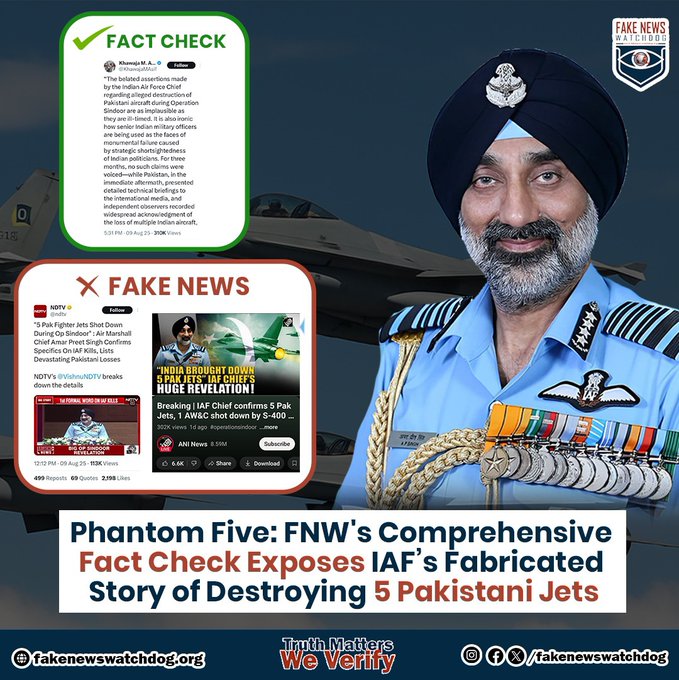Claim: In the aftermath of the May 7 war between India and Pakistan, both nations have engaged in a persistent cycle of allegations, counterclaims, and strategic narrative building. Against this backdrop, and following a heated debate in the Indian Parliament, the Indian government has initiated a new disinformation campaign aimed at influencing public perception of recent military events. During the parliamentary session, several members pressed the government to address Pakistan’s claim of destroying Indian Air Force aircraft during the May 7 operation and to explain why New Delhi agreed to a ceasefire under pressure from the U.S. President if, as officially stated, India was “winning” at the time. On Saturday in Bengaluru, during the 16th Air Chief Marshal L.M. Katre Memorial Lecture,Chief Air Chief Marshal V.R. Chaudhari stated, “We have at least five fighters confirmed destroyed and one large aircraft, possibly an ELINT or AEW&C platform, neutralised from a distance of about 300 km, which is the largest ever recorded surface-to-air kill that we can talk about.” In his presentation, Singh displayed several newly created computer-generated images depicting alleged Pakistani Air Force assets targeted by India during the operation. This marked the first instance of the publicly claiming to have downed such a number of Pakistani aircraft in a single engagement, prompting swift coverage across Indian media and online platforms. Leading indian news channels aired special transmissions with headlines framing it as a major military achievement. On Twitter and other social media platforms, the claim gained momentum as celebratory hashtags trended nationwide, with posts from ordinary users, public figures and influencers featuring videos, infographics and patriotic messages. The surge in online activity amplified the narrative, shaping subsequent debates and influencing public perception.
Fact Check: According to the media-monitoring group Fake News Watchdog, the claim that Pakistani aircraft were destroyed during Operation Sindoor is false and fabricated. Key findings were as follows:
1. Poor Quality and Delayed Release of Images: The images of Pakistani airfields were poorly produced, released long after the event, and contained no new verifiable details. Experts stressed that the delayed release and poor technical quality cast serious doubt on their authenticity and raise questions about the motives behind their publication.
2. No Verifiable Evidence from Indian Air Force: Singh did not identify the make or model of the aircraft allegedly destroyed, nor specify the locations where these incidents occurred. This absence of basic operational details significantly weakens the credibility of his assertions.
3. Timing Designed to Deflect Criticism: The announcement appeared timed to counter mounting criticism of the IAF Media’s performance during Operation Sindoor, where Indian aircraft reportedly suffered losses after being struck by Pakistani missiles. Analysts described this as a deliberate tactic to divert public and media attention from the operational shortcomings revealed during the conflict.
4. Media Amplification Without Proof: Despite the lack of credible evidence, both state-run and private Indian media outlets extensively reported the Air Chief’s statement, framing it as part of their routine anti-Pakistan narrative. This widespread, uncritical coverage amplified the claim domestically without providing any independent verification.
5. Broader Disinformation Strategy: Analysts argue that such narratives are aimed at rewriting the events of May 7, reinforcing nationalist sentiment, and deflecting attention from strategic and operational failures. This reflects a broader pattern in which official statements are leveraged to shape public perception and mask military setbacks.—–1/2




